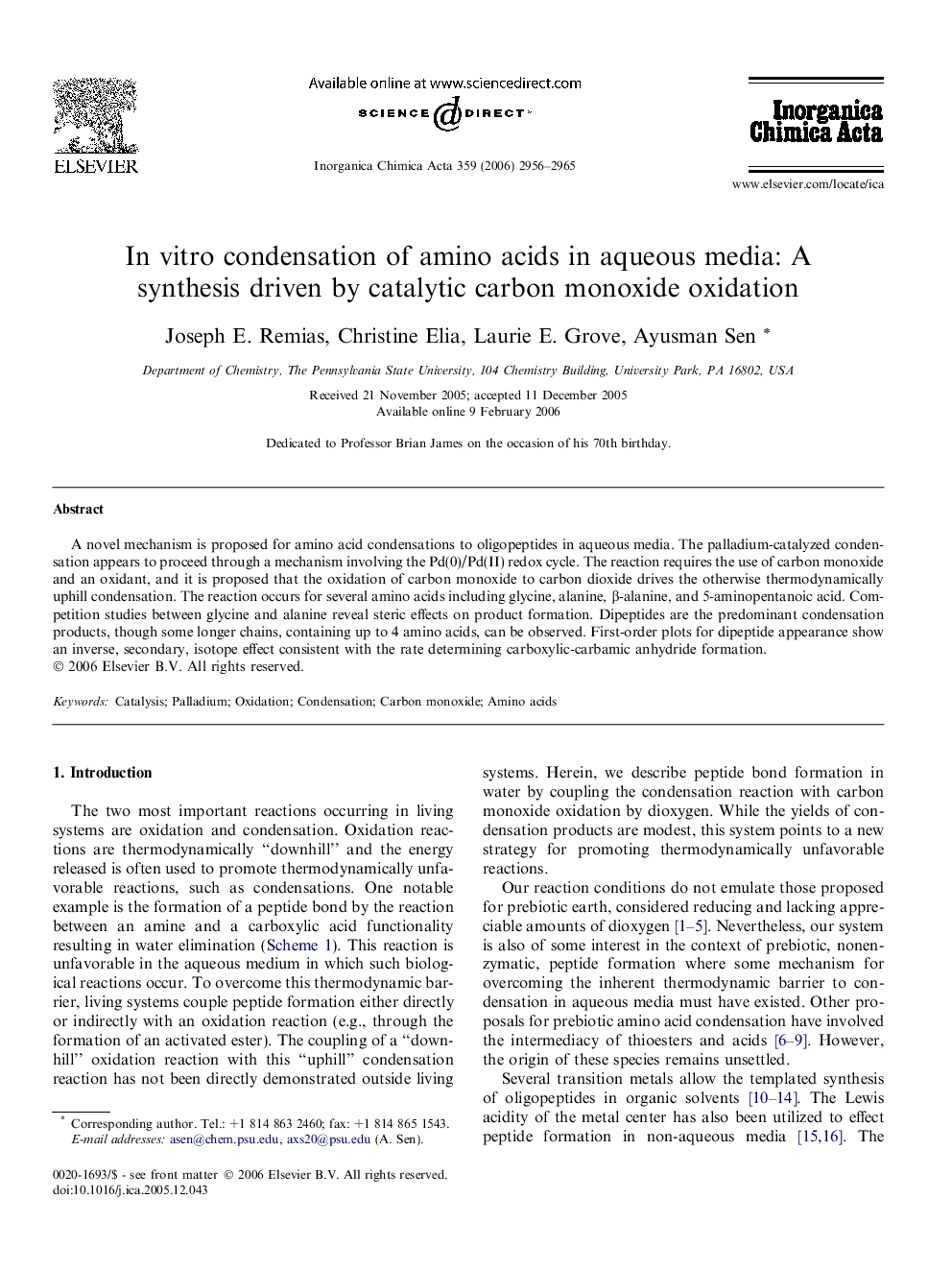| کد مقاله | کد نشریه | سال انتشار | مقاله انگلیسی | نسخه تمام متن |
|---|---|---|---|---|
| 1313037 | 975522 | 2006 | 10 صفحه PDF | دانلود رایگان |

A novel mechanism is proposed for amino acid condensations to oligopeptides in aqueous media. The palladium-catalyzed condensation appears to proceed through a mechanism involving the Pd(0)/Pd(II) redox cycle. The reaction requires the use of carbon monoxide and an oxidant, and it is proposed that the oxidation of carbon monoxide to carbon dioxide drives the otherwise thermodynamically uphill condensation. The reaction occurs for several amino acids including glycine, alanine, β-alanine, and 5-aminopentanoic acid. Competition studies between glycine and alanine reveal steric effects on product formation. Dipeptides are the predominant condensation products, though some longer chains, containing up to 4 amino acids, can be observed. First-order plots for dipeptide appearance show an inverse, secondary, isotope effect consistent with the rate determining carboxylic-carbamic anhydride formation.
The palladium-catalyzed condensation of amino acids to oligopeptides in aqueous media is reported. The reaction proceeds through a mechanism involving the Pd(0)/Pd(II) redox cycle and requires carbon monoxide and an oxidant. It is proposed that the oxidation of carbon monoxide to carbon dioxide drives the otherwise thermodynamically uphill condensation.Figure optionsDownload as PowerPoint slide
Journal: Inorganica Chimica Acta - Volume 359, Issue 9, 1 June 2006, Pages 2956–2965